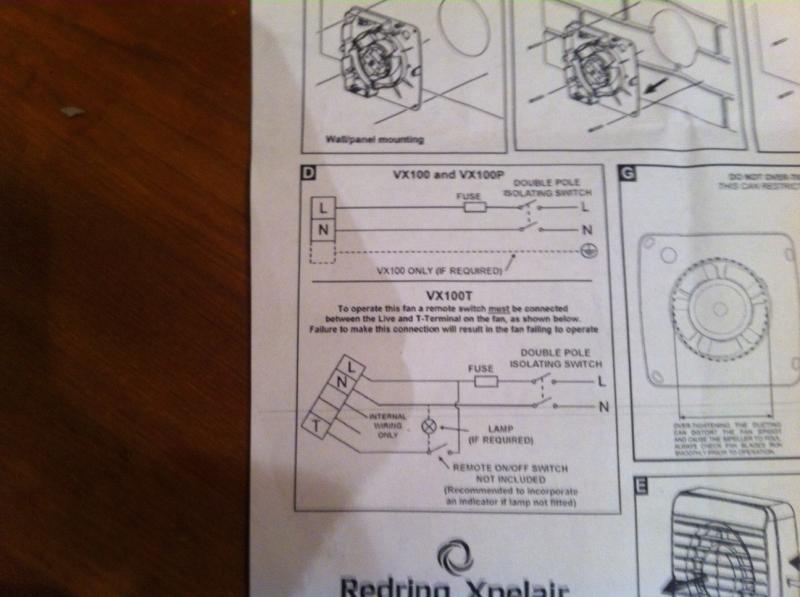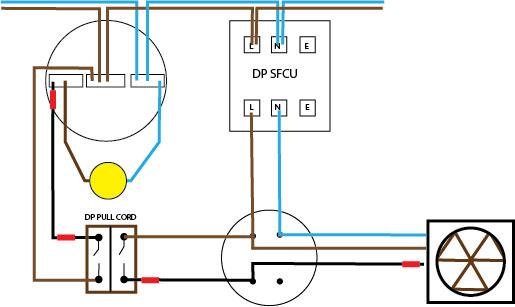Hello
I would be greatful if someone could cast their eyes over the instructions that cam with a replacement extractor fan. The wiring as specified doesn't make any sense to me: the switched live and the live are joined, so that fan will only work when the lights are switched on - there's no alternate supply for the timer function.
Am I right about that or missing something obvious?
Supposing I don't need the timer function, is it ok to wire the fan up in this manner?
And if I did want the timer function, should I wire it up as below? (I have removed earths from diagram for clarity; the fan unit doesn't need an earth) Does this wiring scheme fulfil the stated requirement that "a remote switch must be connected between the live and T-terminal on the fan"?
Thanks for your time!
I would be greatful if someone could cast their eyes over the instructions that cam with a replacement extractor fan. The wiring as specified doesn't make any sense to me: the switched live and the live are joined, so that fan will only work when the lights are switched on - there's no alternate supply for the timer function.
Am I right about that or missing something obvious?
Supposing I don't need the timer function, is it ok to wire the fan up in this manner?
And if I did want the timer function, should I wire it up as below? (I have removed earths from diagram for clarity; the fan unit doesn't need an earth) Does this wiring scheme fulfil the stated requirement that "a remote switch must be connected between the live and T-terminal on the fan"?
Thanks for your time!



